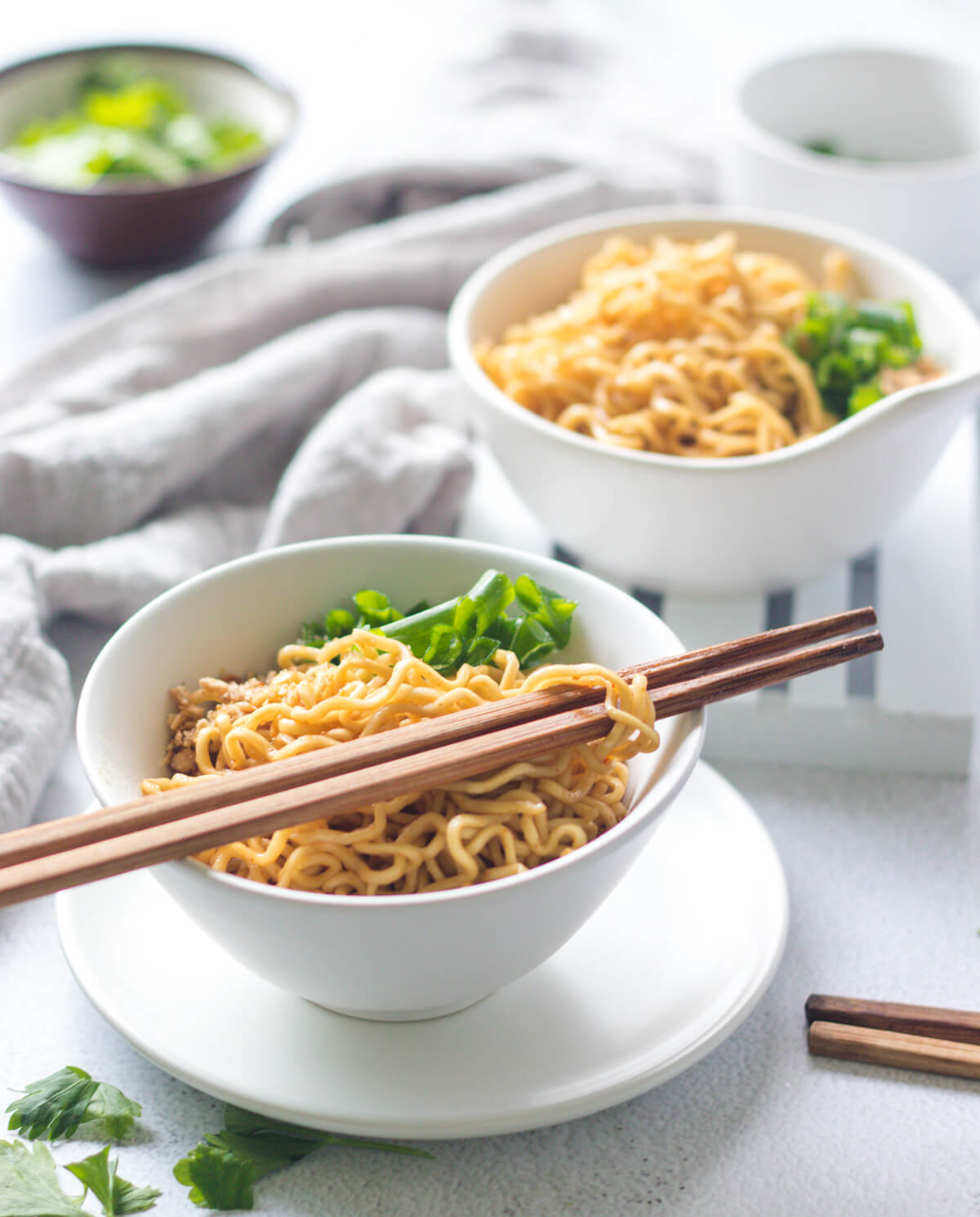The Chinese dish, scallion oil noodles, has to be one of the easiest and tastiest dishes ever invented.
As far as I know, you can get the dish in many parts of China, but it is said to originate in Shanghai. It’s quite commonly served in restaurants focusing on other regional cuisines as well, such as Sichuan restaurants or la mian (hand-pulled noodles) restaurants. In Singapore, you can get it in numerous restaurants, including in Yizun Beef Noodles, which specialises in hand-pulled noodles.
Scallion oil noodles, as the name indicates, are made using scallions (also called spring onions), vegetable oil, and wheat-based noodles. In Bahasa Indonesia, scallions are known as daun bawang (onion leaves), an ingredient that’s very common in Indonesian cooking.
The dish is made by sautéing chopped scallions in oil, on very low heat. This way, the oil becomes infused with the flavour of the scallions. Once the scallions turn brown but not burnt, the oil is ready. It is then poured over the noodles and is ready to be served.
To add a twist to traditional scallion oil noodles, I’ve replaced the wheat noodles with Indomie’s Mi Goreng. This recipe uses all the Indomie seasoning except for the oil. Other than that, the steps are the same. Although this requires a little bit more effort compared to making simple instant noodles, it adds an interesting flavour that goes well with the Mi Goreng seasoning.
Print
Scallion Oil Noodles (Indomie)
- Prep Time: 5 minutes
- Cook Time: 20 minutes
- Total Time: 25 minutes
- Yield: 2 1x
- Category: Rice & Noodles
- Method: Stir-fry
- Cuisine: Chinese
- Diet: Halal
Description
Scallion oil Indomie is a new take on the Chinese scallion oil noodles, made by gently sauteing spring onions (daun bawang) in oil, then adding Indomie along with its Mi Goreng seasoning.
Ingredients
- 2 packets Indomie Mi Goreng
- 3 tbsp roughly-chopped scallion
- 4 tbsp vegetable oil
- 4 tbsp water
- 1 tbsp coriander leaves
- 1 tbsp finely-chopped scallion
Instructions
- In a pan, add the vegetable oil and roughly chopped scallion.
- Gently fry the scallion over low heat. Start removing the pieces of scallion when they turn brown, until no scallion is left in the pan. This should take about 15 minutes.
- The remaining oil will be infused with the scallion flavour, giving you scallion oil. Put this scallion oil aside.
- Add the 4 tbsp water and turn off the heat immediately.
- In a pot, bring water to a boil and cook the instant noodles for 3 minutes. Drain.
- Mix the instant noodles with all the seasoning except the seasoning oil in the pack.
- Pour the scallion oil over the noodles and mix well.
- Garnish with the coriander leaves and finely-chopped scallion.
Notes
- The basic version of Indomie is not spicy. You can experiment with a different, spicier flavour if you’d like more ‘kick’ in your noodles. However, do bear in mind that too much spice/chilli can overpower the delicate flavour of the scallion oil.
Keywords: Experimental, quick and easy, non-spicy





